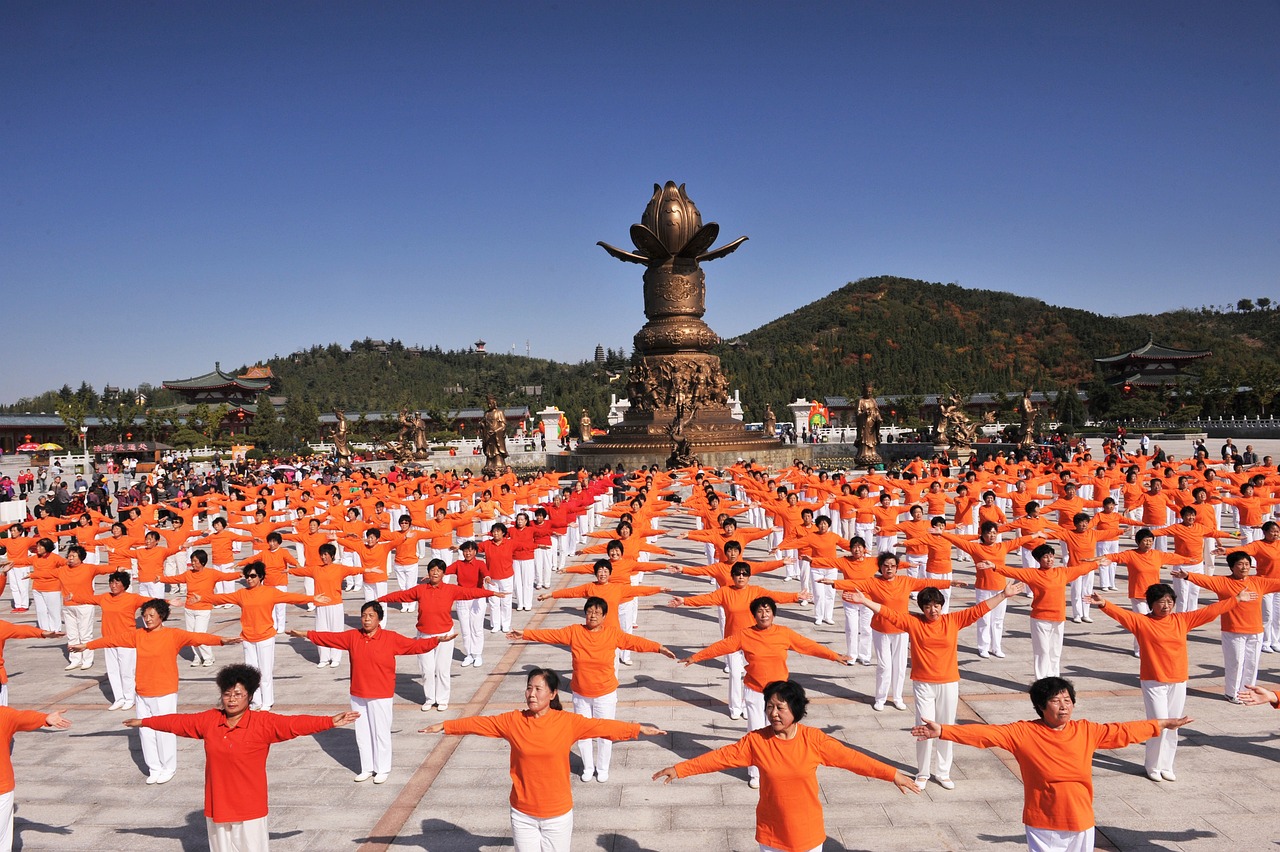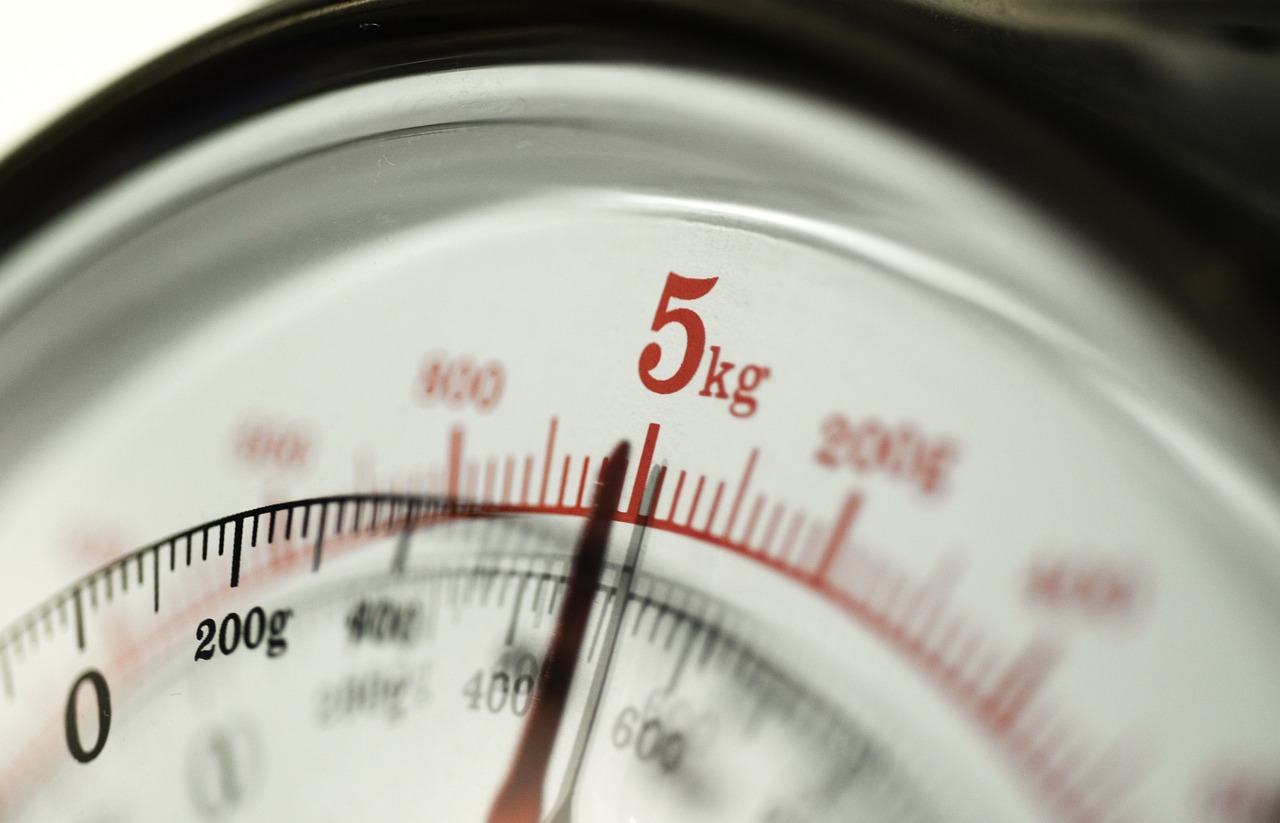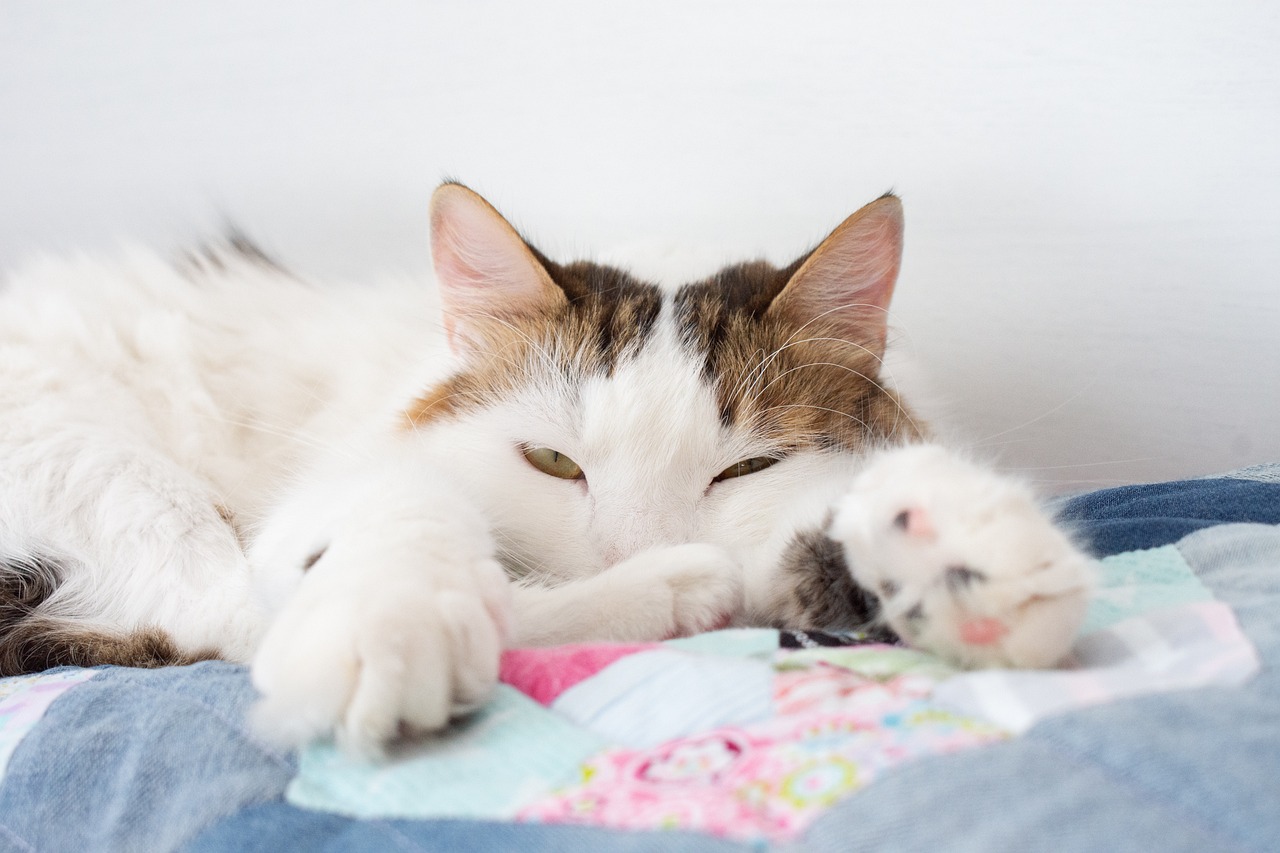Understanding Quilt Squares and Sizes: A Guide
Quilting is not just a hobby; it’s an art form that brings warmth and beauty into our lives. Whether you're a seasoned quilter or just starting out, understanding quilt squares and their sizes is essential for achieving stunning results. Have you ever found yourself puzzled over which square size to use for your latest project? You're not alone! Choosing the right dimensions can feel overwhelming, but it doesn’t have to be. This guide will help you navigate the world of quilt squares, ensuring that you create beautiful quilts that are not only functional but also visually appealing.
When it comes to quilting, size matters more than you might think. The dimensions of your quilt squares can significantly impact both the design and functionality of your finished piece. Imagine trying to fit a square peg in a round hole; that’s what happens when your squares don’t align with your quilt pattern. Understanding quilt square sizes is crucial for several reasons:
- Design Cohesion: The size of your squares affects the overall look of your quilt. Larger squares can create a bold statement, while smaller squares can add intricate detail.
- Fabric Usage: Different sizes will require varying amounts of fabric, which can impact your budget and fabric choices.
- Ease of Assembly: Some patterns are easier to assemble with specific sizes, so knowing your squares can save you time and frustration.
Ultimately, understanding sizes allows you to plan your projects with confidence, leading to a more enjoyable quilting experience.
Now that we’ve established the importance of quilt square sizes, let’s explore some of the most popular dimensions used by quilters. Each size has its unique advantages and applications, making it essential to choose wisely based on your project’s needs.
Standard quilt square sizes are the bread and butter of quilting. They are widely used in patterns and can easily be found in quilting books and online resources. Here are some common sizes:
| Size | Typical Uses |
|---|---|
| 6-inch | Perfect for intricate patterns and smaller quilts. |
| 12-inch | Great for larger quilts and blocks, providing a good balance between detail and size. |
| 8-inch | Versatile size that works well in many patterns. |
These standard sizes can be mixed and matched to create stunning designs, so don’t hesitate to experiment!
While standard sizes are incredibly useful, custom quilt squares allow for a burst of creativity. Have you ever wanted to incorporate a specific design element that just doesn’t fit into a standard size? Custom sizes can solve that problem! To determine the right dimensions for your unique quilt pattern, consider:
- Your design vision: What do you want the final quilt to look like?
- The materials you have: Do you have enough fabric to create larger squares?
- How the squares will fit together: Will they align well with other elements in your quilt?
By thinking outside the box, you can create something truly special that reflects your personal style.
Sometimes, you may find a pattern you love, but the square sizes just don’t work for you. No need to despair! Adjusting existing patterns to fit your chosen square size can be done with a bit of know-how. Here are some tips:
- Calculate the Ratio: If you’re changing the size of your squares, make sure to adjust the other dimensions of the quilt accordingly.
- Test with Fabric Scraps: Before committing to your adjustments, use fabric scraps to test how the new size looks in your pattern.
- Keep the Design Intent: While it’s okay to change sizes, try to maintain the overall design and integrity of the quilt.
With so many options available, how do you choose the right quilt square size for your project? It all boils down to a few key factors:
- The Purpose of the Quilt: Is it for a bed, a wall hanging, or a gift? The intended use can guide your size choice.
- The Complexity of the Design: More intricate designs may benefit from smaller squares, while simpler designs can use larger ones.
- Your Skill Level: If you're a beginner, starting with larger squares can make the process less daunting.
Ultimately, trust your instincts and choose a size that feels right for you and your project.
Accurate measurement is vital in quilting, and having the right tools can make all the difference. Let’s take a look at some essential measuring tools that every quilter should have in their toolkit:
From rulers to rotary cutters, the right tools can streamline your quilting process. Here are some must-haves:
- Quilting Ruler: A clear, marked ruler is essential for accurate measurements.
- Rotary Cutter: This tool makes cutting fabric quick and precise.
- Cutting Mat: A self-healing mat protects your surfaces and allows for easier cutting.
Achieving accuracy in quilt square measurements can be challenging, but with a few practical tips, you can avoid common pitfalls:
- Always double-check your measurements before cutting.
- Use a consistent cutting method to ensure uniformity.
- Work on a flat, stable surface to avoid inaccuracies.
In conclusion, understanding quilt square sizes is fundamental for successful quilting. By considering the information provided in this guide, you can enhance your quilting skills and create beautiful, well-structured quilts. Remember, quilting is a journey, and with each project, you’ll learn something new. So grab your fabric, choose your squares, and let your creativity flow!
Q: What is the most common quilt square size?
A: The 12-inch square is one of the most common sizes used in quilting, offering a good balance between detail and ease of assembly.
Q: Can I use different square sizes in one quilt?
A: Absolutely! Mixing different square sizes can add visual interest and complexity to your quilt design.
Q: How do I calculate fabric requirements for custom sizes?
A: To calculate fabric requirements for custom sizes, determine the total number of squares needed and multiply by the size of each square. Don’t forget to account for seam allowances!

Importance of Quilt Square Sizes
Understanding quilt square sizes is crucial for achieving the desired outcome in your quilting projects. Just like a chef needs the right measurements for a recipe, a quilter must pay attention to the dimensions of their quilt squares to create a harmonious and functional piece. The size of your quilt squares can significantly affect the overall design, the quilt's functionality, and even the ease of assembly. Imagine trying to fit together puzzle pieces that are all different sizes; it just won’t work, right? The same principle applies to quilting.
When you choose the right quilt square size, you ensure that your quilt not only looks good but also serves its intended purpose. For instance, larger squares can create bold patterns and are often easier to sew together, making them ideal for beginners. On the other hand, smaller squares can yield intricate designs and allow for greater creativity, but they require more precision and patience. Thus, understanding the importance of size is akin to knowing the difference between a sprint and a marathon; each has its own strategies and outcomes.
Moreover, quilt square sizes can influence the fabric choice and the amount of material required. Larger squares may necessitate larger pieces of fabric, while smaller squares might allow you to use up scraps or remnants from previous projects. This not only helps in managing your fabric stash but also promotes sustainability in your quilting practice. It's a win-win situation!
Here are a few reasons why quilt square sizes matter:
- Design Aesthetics: The size of the squares can dramatically change the visual impact of the quilt.
- Ease of Assembly: Larger squares can simplify the sewing process, especially for beginners.
- Fabric Utilization: Different sizes can help in maximizing fabric use and minimizing waste.
- Intended Use: The purpose of the quilt (e.g., a bedspread vs. a wall hanging) can dictate the size of the squares.
In summary, quilt square sizes are not just numbers; they are the foundation upon which your quilting masterpiece is built. By understanding and choosing the appropriate sizes, you can enhance not only the beauty of your quilt but also your quilting experience as a whole. So, the next time you embark on a quilting project, remember that size does matter!

Common Quilt Square Sizes
When it comes to quilting, the size of your quilt squares can make a **huge** difference in the final product. Understanding the common quilt square sizes is essential for both beginners and seasoned quilters alike. The dimensions of your squares influence not only the overall look of your quilt but also its functionality. For instance, larger squares can create a bold, graphic design, while smaller squares may result in intricate patterns that showcase your sewing skills. So, what are the most popular quilt square sizes, and how can they serve your quilting projects?
Let's dive into some of the most commonly used quilt square sizes:
| Size (Inches) | Typical Use | Advantages |
|---|---|---|
| 5 | Small projects, patchwork | Great for intricate designs, minimal fabric waste |
| 6 | Lap quilts, children's quilts | Versatile size, easy to handle |
| 8 | Wall hangings, decorative quilts | Good balance between detail and size |
| 10 | Throw quilts, bed quilts | Popular for quick projects, allows for larger designs |
| 12 | Bed quilts, larger projects | Creates a bold statement, fewer pieces to sew |
Each size has its unique characteristics and can be used for various quilting styles. For example, the **6-inch** square is a favorite among quilters for its versatility. It works wonderfully in both traditional and modern quilt patterns. On the other hand, the **12-inch** square is often chosen for larger quilts, as it allows for a quicker assembly of blocks without sacrificing design complexity.
In addition to these standard sizes, many quilters enjoy experimenting with custom sizes. Custom quilt squares can add a personal touch to your projects, allowing you to express your creativity in unique ways. Whether you want to create a quilt that tells a story or one that simply showcases your favorite fabrics, custom sizes can help you achieve that vision.
However, while exploring different sizes, it’s essential to remember that adjusting patterns may sometimes be necessary. For instance, if you fall in love with a pattern that uses **10-inch** squares but you prefer **8-inch** squares, you may need to modify the pattern's layout. This might sound daunting, but with a little practice, it can become a seamless part of your quilting journey.
Ultimately, choosing the right quilt square size depends on your specific project and personal style. Think about the purpose of your quilt: is it a cozy throw for chilly nights, or a decorative piece for your wall? The answer will guide you in selecting the most suitable size. Remember, quilting is not just about following rules; it's about enjoying the process and creating something that you love.

Standard Sizes
When it comes to quilting, understanding is essential for both beginners and seasoned quilters alike. These sizes serve as the backbone of many quilt patterns, allowing for a cohesive and organized design. Among the most common standard quilt square sizes are the 6-inch and 12-inch squares, each offering unique benefits and applications.
The 6-inch square is often favored for smaller projects or intricate designs. Its compact size allows for a greater variety of patterns and colors, making it perfect for creating detailed patchwork quilts. Imagine a beautiful mosaic coming together, where each small piece contributes to a larger picture. This size is particularly useful for baby quilts or wall hangings, where a delicate touch is desired. Additionally, using smaller squares can help to reduce fabric waste, allowing quilters to maximize their materials.
On the other hand, the 12-inch square is a powerhouse in the quilting world. It serves as a versatile building block for larger quilts, providing both stability and visual impact. Many traditional quilt patterns, such as the classic log cabin or nine-patch, utilize this size to create striking designs that can be easily pieced together. Think of it as the sturdy foundation of a house; without it, the entire structure may lack support. The larger size also means fewer pieces to sew, which can significantly speed up the quilting process, making it an ideal choice for those looking to complete a project in a timely manner.
In addition to these popular sizes, quilters often experiment with other standard dimensions as well, such as 8-inch and 10-inch squares. Each of these sizes brings its own flair to a quilt, allowing for a mix of textures and patterns. For instance, an 8-inch square can bridge the gap between the smaller and larger sizes, offering a sweet spot for those who want a bit more room without going too big.
Here's a quick reference table that outlines some of the common standard quilt square sizes and their typical uses:
| Size | Typical Uses |
|---|---|
| 6-inch | Baby quilts, intricate designs, patchwork |
| 8-inch | Bridging the gap between small and large projects |
| 10-inch | Layer cakes, larger patchwork designs |
| 12-inch | Traditional patterns, large quilts, quick projects |
Ultimately, the choice of standard size can dramatically influence the overall look and feel of your quilt. It’s important to consider not only the aesthetic appeal but also the functionality of the quilt you are creating. Whether you’re opting for the intricate beauty of a 6-inch square or the bold statement of a 12-inch square, understanding these standard sizes is key to bringing your quilting vision to life.

Custom Sizes
When it comes to quilting, can truly unleash your creativity and allow you to make a quilt that's uniquely yours. Unlike standard sizes, which often dictate the flow and design of a project, custom sizes give you the freedom to experiment and tailor your quilt to fit specific dimensions or aesthetic preferences. Imagine crafting a quilt that perfectly fits your favorite chair or bedspread, or even creating a wall hanging that showcases your personal style!
Determining the right custom size for your quilt squares can depend on several factors, including the quilt's intended use and the overall design you envision. For example, if you're working on a quilt for a baby, you might opt for smaller squares to create a more intricate pattern, whereas a large throw quilt could benefit from larger squares that make a bold statement. Here are some considerations to keep in mind when choosing custom sizes:
- Purpose: What will the quilt be used for? A decorative piece may allow for more artistic freedom, while a functional quilt may require specific dimensions.
- Design Complexity: More intricate designs often lend themselves to smaller squares, while simpler designs can be more effective with larger blocks.
- Fabric Patterns: The fabric you choose can also influence your square size. Larger patterns may look better when showcased in bigger squares, while smaller patterns can get lost in larger cuts.
Once you've decided on a size, the next step is to create your custom squares. This involves measuring and cutting your fabric accurately. Here’s a simple process to help you get started:
- Choose your fabric and design.
- Decide on the dimensions of your quilt square.
- Use a rotary cutter and a cutting mat for precision.
- Cut your fabric into the desired square size, ensuring each piece is uniform.
Moreover, don't shy away from experimenting with different sizes within the same quilt! Mixing and matching various dimensions can create a dynamic and visually appealing effect. Just remember to plan your layout beforehand to ensure everything flows together harmoniously.
Ultimately, custom sizes in quilting are about personal expression and creativity. So, grab your fabric, measure twice, cut once, and let your imagination run wild!
Q: Can I mix standard and custom sizes in my quilt?
A: Absolutely! Mixing sizes can add visual interest and depth to your quilt design. Just make sure to plan your layout carefully.
Q: How do I know what size to choose for my quilt squares?
A: Consider the quilt's purpose, the complexity of your design, and the fabric patterns you are using. These factors will guide you in selecting the right size.
Q: What tools do I need for cutting custom sizes?
A: A rotary cutter, a cutting mat, and a clear ruler are essential tools for achieving accurate measurements and clean cuts.
Q: Is it difficult to adjust existing patterns for custom sizes?
A: It can be challenging, but with careful measuring and a good understanding of the pattern, you can make adjustments while preserving the quilt's integrity.

Adjusting Patterns
When you dive into the world of quilting, you might quickly realize that not every pattern fits perfectly with the quilt square size you have in mind. This is where the art of comes into play. It's like tailoring a dress; just as you wouldn’t wear something that doesn’t fit, you shouldn’t settle for a quilt pattern that doesn’t align with your vision or materials. Here’s how to go about it!
First off, it’s essential to understand the original dimensions of the pattern. Each quilt pattern usually comes with specific measurements that dictate how the squares will fit together. If you’re looking to change the size of your quilt squares, you’ll need to adjust the dimensions accordingly. This might sound a bit daunting, but with a few handy tips, you’ll be able to modify patterns like a pro.
One effective method is to use a scale factor. For instance, if you want to increase a pattern from 6 inches to 12 inches, you would multiply all dimensions by 2. This simple mathematical adjustment can save you a lot of headaches later on. However, remember that changing the size of the squares can also affect the overall look of the quilt. Larger squares may give a more modern, bold appearance, while smaller squares can create intricate, detailed designs.
Another crucial aspect to consider is the seam allowance. When you adjust the size of your quilt squares, you must also account for the seams. Typically, a seam allowance of ¼ inch is standard in quilting. So, if you’re increasing the size of your squares, ensure that you add this allowance to your new measurements. Otherwise, you might end up with blocks that don’t fit together as intended.
Also, don’t forget about the fabric type you’re using. Different fabrics can behave differently when cut and sewn. For example, if you’re working with a stretchy fabric, you may need to make additional adjustments to ensure that your quilt retains its shape and structure. Always test your adjustments by cutting a few sample squares before committing to the entire quilt.
Finally, it’s a good idea to keep a quilt journal where you document your adjustments and the reasons behind them. This can be an invaluable resource for future projects, allowing you to replicate successful adjustments or avoid mistakes you’ve made in the past. Think of it as your personal quilting roadmap!
In summary, adjusting quilt patterns to fit your chosen square size doesn’t have to be a daunting task. With a little math, attention to detail, and a creative mindset, you’ll be able to create stunning quilts that reflect your unique style and preferences. Embrace the process, and don’t be afraid to experiment!
- What is the best way to adjust quilt patterns? Start by determining the scale factor for your new square size, then adjust all dimensions accordingly, keeping seam allowances in mind.
- How do I ensure my quilt squares fit together after adjustments? Always test your new sizes with sample squares before cutting all your fabric to avoid mismatches.
- Can I use any type of fabric for my quilt? While you can use various fabrics, consider their stretch and drape, as these factors will affect how well your quilt holds its shape.

Choosing the Right Size
When it comes to quilting, choosing the right size for your quilt squares is like selecting the perfect ingredients for a recipe; it can make all the difference between a masterpiece and a mishap. The dimensions of your quilt squares will not only dictate the overall look of your quilt but also its functionality. So, how do you decide what's best for your project? Let's dive into the factors that can help you make this crucial decision.
First and foremost, consider the purpose of your quilt. Are you making a cozy throw for your couch, a bedspread for a king-sized bed, or perhaps a decorative wall hanging? Each of these projects may require different square sizes to achieve the desired effect. For instance, larger squares might be ideal for a quick and easy throw quilt, while smaller squares can create intricate designs that are perfect for wall hangings.
Next, think about the complexity of the design you have in mind. If you're a beginner, it might be wise to stick with standard sizes like 6-inch or 12-inch squares. These sizes are not only easy to work with but also widely used in many patterns. On the other hand, if you're feeling adventurous and want to explore custom sizes, just make sure you have a solid understanding of how these dimensions will affect the overall layout and balance of your quilt.
Another important aspect to consider is the fabric type. Different fabrics can behave differently when cut into various sizes. For instance, if you're working with a fabric that has a directional print, you'll want to ensure that your squares are large enough to showcase the design effectively. Conversely, if you're using a busy print, smaller squares might help to blend the patterns together more harmoniously.
Also, don’t forget about the seam allowances. When calculating the size of your squares, always account for the seams. If you want a finished square that measures 12 inches, you should cut your fabric larger to accommodate the seams, typically around ½ inch on each side. This is crucial for ensuring that your final quilt looks polished and professional.
Lastly, it can be beneficial to sketch out your design before cutting your fabric. Visualizing how the different sizes will come together can provide clarity and help you make informed decisions. You might even want to create a small sample quilt using various sizes to see how they interact before committing to a larger project.
In summary, choosing the right size for your quilt squares is a multifaceted decision that involves considering the quilt's purpose, design complexity, fabric type, and seam allowances. By taking the time to evaluate these factors, you'll be well on your way to creating a quilt that not only looks stunning but also serves its intended function beautifully.
- What is the most common quilt square size? The most common sizes are 6-inch and 12-inch squares, widely used in various quilting patterns.
- Can I mix different square sizes in one quilt? Absolutely! Mixing sizes can add visual interest and complexity to your quilt design.
- How do I ensure my squares are cut accurately? Use a rotary cutter and a clear ruler to achieve precise measurements and cuts.
- What if I want a custom size? Determine your desired finished size and add seam allowances to your cutting measurements.

Tools for Measuring Quilt Squares
When it comes to quilting, precision is key, and having the right tools for measuring quilt squares can make all the difference in your projects. Imagine trying to bake a cake without measuring cups—chaos, right? The same principle applies to quilting. Without accurate measurements, your quilt can end up looking uneven or poorly constructed. So, let’s dive into the essential tools that can help you achieve that perfect square every time!
First on the list is the trusty quilter's ruler. This tool is a must-have for any quilter. Typically made of clear acrylic, a quilter's ruler allows you to see your fabric underneath, making it easier to line up your cuts. Many rulers come with grid lines and measurements, which can help ensure that your squares are perfectly sized. When using a ruler, always remember to place it firmly on the fabric to avoid slipping, which can lead to inaccuracies.
Next up is the rotary cutter. This tool is like a pizza cutter, but for fabric! It’s incredibly efficient for cutting multiple layers of fabric at once, which is a huge time-saver. When paired with a cutting mat, the rotary cutter makes clean, precise cuts that are essential for achieving uniform quilt squares. Just be sure to use a self-healing cutting mat to protect your work surface and keep your blades sharp.
Alongside these, a measuring tape is invaluable, especially when you're working with larger pieces of fabric or when you need to measure curves. A flexible measuring tape can easily conform to the shape of your fabric, ensuring you get accurate measurements every time. It’s also handy for checking the dimensions of your quilt top before you start assembling it.
For those who want even more precision, consider using a square-up ruler. This specialized tool is designed to help you check the squareness of your blocks. After cutting and piecing your quilt squares, using a square-up ruler ensures that everything aligns perfectly, preventing any wonky seams from sneaking into your project.
Lastly, don’t overlook the importance of fabric scissors. While they may not be measuring tools per se, having a good pair of fabric scissors is essential for trimming threads and making small adjustments. A clean cut can make a world of difference in how your quilt turns out.
In summary, having a well-equipped toolkit with the right measuring tools can significantly enhance your quilting experience. With a quilter's ruler, rotary cutter, measuring tape, square-up ruler, and fabric scissors at your disposal, you’ll be well on your way to creating beautiful, accurately sized quilt squares. Remember, the more precise your measurements, the more stunning your quilt will be!
- What is the best way to measure quilt squares? It's best to use a combination of a quilter's ruler and a rotary cutter for precise measurements.
- Can I use regular scissors for cutting fabric? While you can, it's highly recommended to use fabric scissors for cleaner cuts and to preserve the integrity of your fabric.
- How do I ensure my quilt squares are even? Always double-check measurements with a square-up ruler after cutting and before piecing your quilt squares together.

Measuring Tools
When it comes to quilting, having the right is essential for achieving precision and ensuring that your quilt squares fit together seamlessly. Imagine trying to build a house without a level or a tape measure; it would be a recipe for disaster! Similarly, in quilting, accurate measurements can make or break your project. So, let’s dive into the must-have tools that every quilter should have in their arsenal.
First and foremost, a good quality quilt ruler is indispensable. These rulers are typically marked with both inches and centimeters, allowing you to measure accurately and cut your fabric with confidence. Most quilt rulers are transparent, making it easier to see the fabric beneath and ensuring that you’re cutting straight lines. A 6-inch by 24-inch ruler is a popular choice among quilters because it provides ample length for larger cuts while still being manageable.
Next up is the rotary cutter. This tool is a game-changer for many quilters. Instead of using scissors, which can lead to uneven edges and more effort, a rotary cutter allows you to slice through multiple layers of fabric with ease. Pair it with a self-healing cutting mat, and you have a winning combination that will protect your surfaces and keep your blades sharp.
Additionally, a measuring tape is a handy tool that should not be overlooked. It’s flexible, making it perfect for measuring curved edges or larger pieces of fabric. Keep one in your quilting kit to quickly check dimensions without having to unroll a ruler every time.
For those who love precision, a digital fabric scale can be an excellent investment. This tool allows you to measure fabric weight accurately, which can be particularly useful if you’re purchasing fabric by the yard or need to calculate how much fabric to buy for a specific project.
Lastly, consider adding a seam gauge to your toolkit. This small tool is perfect for measuring seam allowances and can help you maintain consistency throughout your quilting process. It’s a simple yet effective way to ensure your squares are uniform in size, which is crucial when piecing them together.
To summarize, the right measuring tools can significantly enhance your quilting experience. Here’s a quick overview of the essential tools:
| Tool | Purpose |
|---|---|
| Quilt Ruler | For measuring and cutting fabric accurately. |
| Rotary Cutter | For cutting multiple layers of fabric with precision. |
| Measuring Tape | For measuring larger pieces and curves. |
| Digital Fabric Scale | For weighing fabric accurately. |
| Seam Gauge | For measuring seam allowances. |
Armed with these tools, you’ll find that your quilting process becomes more enjoyable and efficient. Remember, the key to a beautiful quilt lies in the details, and accurate measurements are the first step towards creating a masterpiece!
- What is the best ruler size for quilting? A 6-inch by 24-inch ruler is highly recommended for versatility.
- Can I use regular scissors instead of a rotary cutter? While you can, a rotary cutter provides cleaner cuts and is more efficient for quilting.
- How do I maintain my measuring tools? Keep them clean and store them in a dry place to avoid damage.

Tips for Accurate Measurement
When it comes to quilting, precision is key. Accurate measurement can mean the difference between a beautifully crafted quilt and one that falls apart at the seams. To ensure you get it right every time, here are some practical tips you should keep in mind.
First and foremost, always use a quality ruler that has clear markings. A good quilting ruler should be transparent and feature both standard and metric measurements. This way, you can easily see your fabric beneath it, making it easier to line up your cuts accurately. If your ruler is too small, it can lead to misalignment, so opt for one that’s at least 6 inches wide.
Next, consider the importance of a rotary cutter. This tool can make clean, straight cuts much more efficiently than scissors. When using a rotary cutter, always ensure that your cutting mat is in good condition. A worn-out mat can lead to uneven cuts, which can throw off the measurements of your quilt squares. If your mat has deep grooves or is heavily worn, it might be time to replace it.
Additionally, when measuring fabric, make sure to iron it first. Wrinkles and creases can affect your measurements, leading to inaccuracies. After ironing, lay your fabric flat on a cutting mat, and ensure it’s smooth and free of bunches. This simple step can save you a lot of headaches down the road.
Another tip is to always measure twice and cut once. It sounds cliché, but it’s a golden rule for a reason! Before making any cuts, take the time to double-check your measurements. This not only helps you avoid mistakes but also builds your confidence as you work on your quilt.
Finally, keep a notebook or a digital note on your phone to track your measurements and any adjustments you might need to make along the way. This is especially helpful if you are working on multiple quilts or patterns at once. By keeping a record, you can refer back to your notes when needed and maintain consistency in your projects.
In summary, accurate measurement is a cornerstone of successful quilting. By utilizing the right tools, preparing your fabric properly, and taking the time to double-check your work, you can ensure that your quilt squares are perfectly sized. Remember, quilting is not just about the end product; it’s also about enjoying the process and learning along the way.
- What is the best tool for measuring quilt squares? A quality quilting ruler and a rotary cutter are essential for precise measurements.
- How do I avoid mistakes when measuring? Measure twice and cut once! Also, keep your fabric smooth and wrinkle-free.
- Can I use regular scissors instead of a rotary cutter? While you can use scissors, a rotary cutter provides cleaner and more accurate cuts.
- What should I do if my measurements are off? You can adjust your patterns, but it’s best to measure correctly from the start to avoid complications.

Conclusion and Final Thoughts
In conclusion, understanding quilt square sizes is not just a technical aspect of quilting; it’s a gateway to unleashing your creativity and ensuring that your projects turn out beautifully. Whether you’re a seasoned quilter or just starting out, knowing how to choose the right size can make a world of difference in the overall aesthetic and functionality of your quilts. Remember, each quilt square is like a piece of a puzzle, and when they fit together perfectly, they create a stunning masterpiece.
As you embark on your quilting journey, consider the importance of size in your designs. From standard sizes like 6-inch and 12-inch squares to custom dimensions that reflect your personal style, each choice you make will impact the final product. Don’t hesitate to experiment with different sizes and patterns; after all, quilting is as much about creativity as it is about precision.
Additionally, the right tools and techniques for measuring quilt squares can significantly enhance your quilting experience. Using accurate measuring tools, such as rulers and rotary cutters, paired with practical tips for measurement, will help you avoid common pitfalls and ensure that your squares are cut to perfection. Remember, a well-measured quilt square is the first step toward a beautiful quilt.
Lastly, as you refine your skills and gain confidence in your quilting abilities, always keep in mind the joy that comes from creating something unique and personal. Quilting is not just about the end result; it’s about the process, the stories you tell through your fabric choices, and the love you stitch into each square. So, gather your materials, choose your sizes wisely, and let your creativity flow!
- What is the most common quilt square size? The most common quilt square sizes are 6-inch and 12-inch squares, which are widely used in various patterns.
- Can I use custom sizes for my quilt squares? Absolutely! Custom sizes allow you to personalize your quilt and create unique designs that reflect your style.
- How do I adjust a pattern to fit my chosen square size? To adjust a pattern, you can modify the measurements of the pieces while keeping the overall design intact. Always double-check your calculations!
- What tools do I need for measuring quilt squares? Essential tools include quilting rulers, rotary cutters, and cutting mats to ensure accurate measurements.
- Why is accurate measurement important in quilting? Accurate measurement is crucial because it ensures that your quilt squares fit together seamlessly, resulting in a polished final product.
Frequently Asked Questions
- What are the most common quilt square sizes?
The most common quilt square sizes are typically 6-inch and 12-inch squares. These sizes are widely used in various quilting patterns and provide a solid foundation for many quilt designs. Choosing a standard size can simplify the quilting process and make it easier to follow patterns.
- How do I choose the right quilt square size for my project?
Choosing the right quilt square size depends on several factors, including the quilt's purpose, design complexity, and personal preference. Consider the overall look you want to achieve and how the size will affect the quilt's functionality. For instance, larger squares can create a bold statement, while smaller squares may offer intricate details.
- Can I create custom quilt square sizes?
Absolutely! Custom quilt square sizes allow for creativity and personalization in your quilting projects. You can determine the size based on your design or specific pattern requirements. Just ensure that the dimensions you choose work well with the overall layout of the quilt.
- What tools do I need for measuring quilt squares accurately?
Accurate measurement is essential in quilting, and having the right tools makes a big difference. Essential tools include a quilting ruler, rotary cutter, and cutting mat. These tools help ensure precise measurements, making it easier to cut and sew your quilt squares accurately.
- What are some tips for ensuring accurate measurements?
To achieve accurate measurements, always double-check your dimensions before cutting. Use a clear quilting ruler for precise lines, and make sure your cutting mat is flat and stable. Additionally, take your time and avoid rushing through the measuring process to minimize errors.
- How can I adjust existing quilt patterns to fit my chosen square size?
Adjusting quilt patterns involves recalculating the dimensions of the pieces based on your chosen square size. This may require you to modify the number of squares or the layout of the quilt. Always keep the overall design in mind to ensure that the quilt maintains its integrity and visual appeal.



















